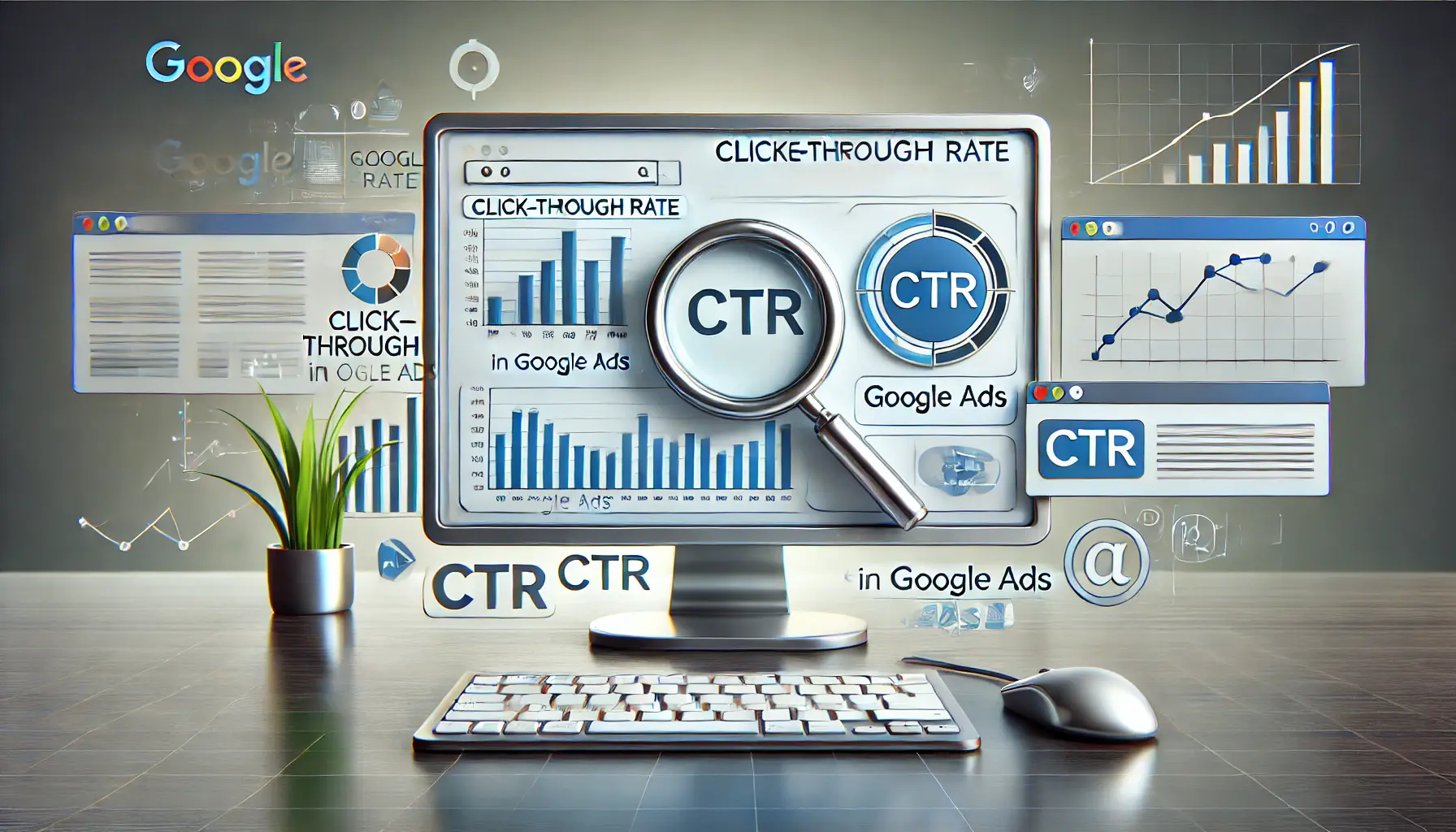Click-Through Rates (CTR) are a pivotal metric in the realm of Search Engine Optimization (SEO).
They not only reflect the effectiveness of your SEO strategies but also play a crucial role in driving more traffic to your website.
In today’s digital landscape, where competition for online visibility is intense, understanding and improving your CTR is essential.
This comprehensive guide delves into the intricacies of CTR in SEO, offering valuable insights and actionable strategies to enhance your website’s performance in search engine results pages (SERPs).
At its core, CTR measures the ratio of users who click on a specific link to the total number of users who view it.
This simple yet powerful metric serves as a direct indicator of how compelling and relevant your content appears to potential visitors.
A high CTR not only signifies effective engagement but also signals to search engines that your content is valuable, potentially boosting your rankings.
Let’s explore the multifaceted relationship between SEO and CTR, and how you can leverage this to your advantage.
- Understanding the Impact of CTR on SEO
- Optimizing Page Elements for Higher CTR
- Leveraging SERP Features for Enhanced Visibility
- Content Optimization for Higher Engagement
- Advanced Techniques for CTR Improvement
- Monitoring and Analyzing CTR for Continuous Improvement
- Integrating CTR Optimization with Overall SEO Strategy
- Maximizing SEO Through Strategic CTR Enhancement
- SEO and Click-Through Rates: Essential FAQs
Understanding the Impact of CTR on SEO
CTR’s impact on SEO cannot be overstated.
It’s a critical component that search engines, particularly Google, consider when determining the relevance and quality of your content.
A higher CTR often correlates with higher rankings in SERPs, as it indicates that users find your content useful and relevant to their search queries.
This relationship is a two-way street: while good SEO practices can lead to a higher CTR, a high CTR can also improve your SEO performance.
However, achieving a high CTR goes beyond just ranking at the top of search results.
It involves crafting compelling titles, meta descriptions, and using URLs that resonate with your target audience.
These elements must work in harmony to not only attract clicks but also deliver on the promises made, thereby reducing bounce rates and increasing user engagement.
Key Strategies to Boost Organic CTR
Improving your organic CTR involves several key strategies.
First and foremost is optimizing your title tags.
Titles are the first thing a user notices in SERPs, and they play a significant role in influencing click decisions.
Crafting titles that are both informative and enticing, without resorting to clickbait, is an art.
Incorporating relevant keywords and numbers, and keeping titles under 60 characters can significantly enhance their appeal.
Meta descriptions also play a crucial role.
These brief summaries provide a snapshot of what users can expect on your page.
A well-crafted meta description should be concise, include target keywords, and have a clear call-to-action, encouraging users to click through to your site.
Remember, while meta descriptions don’t directly impact rankings, they are instrumental in driving clicks.
Remember, the goal is not just to attract clicks but to provide value that keeps users engaged and coming back for more.
Optimizing Page Elements for Higher CTR
Enhancing CTR involves a meticulous approach to optimizing various page elements.
Each component, from your URL to the meta tags, plays a vital role in attracting and retaining user attention.
Here’s a breakdown of key areas to focus on:
Effective Title Tag Creation
Creating effective title tags is more than just inserting keywords.
It’s about striking a balance between SEO and user engagement.
Consider the following tips:
- Use Power Words: Words like ‘Ultimate’, ‘Guide’, or ‘Best’ can trigger emotional responses and curiosity.
- Include Numbers: Titles with numbers, such as ‘Top 10 Tips’ or ‘5 Essential Strategies’, often stand out and promise well-structured content.
- Keep It Concise: Aim for a length that’s long enough to be descriptive but short enough to avoid being cut off in SERPs.
Meta Description Mastery
Your meta description acts as an advertisement for your content.
To make it compelling:
- Highlight Unique Value: Clearly state what makes your content stand out. Is it a comprehensive guide, an exclusive interview, or groundbreaking research?
- Include a Call-to-Action: Encourage users to ‘Learn More’, ‘Discover’, or ‘Explore’ to prompt action.
- Match User Intent: Ensure your description aligns with what users are searching for, addressing their needs or questions.
URL Optimization
URLs are often overlooked but are crucial for user trust and CTR.
Keep your URLs:
- Short and Sweet: Long URLs can be daunting. Shorter URLs are easier to read and more attractive.
- Keyword-Rich: Include relevant keywords to improve SEO and give users an idea of what to expect on the page.
- Readable: Use hyphens to separate words and avoid complex strings of numbers or letters.
Note: While optimizing these elements is crucial, always ensure they accurately represent the content on your page to maintain user trust.
Leveraging SERP Features for Enhanced Visibility
Search Engine Results Pages (SERPs) are constantly evolving, offering new features that can significantly impact your CTR.
Understanding and leveraging these features can give you a competitive edge.
Here’s how to make the most of them:
Rich Snippets and Featured Snippets
Rich snippets and featured snippets provide additional information and visibility in SERPs.
To optimize for these:
- Structured Data: Use schema markup to provide search engines with detailed information about your content, enhancing the chance of obtaining rich snippets.
- Answer Questions: Structure your content to directly answer common questions related to your topic, increasing the likelihood of appearing in featured snippets.
- Use Lists and Tables: Organize information in lists or tables where appropriate, as these formats are often favored in featured snippets.
Local SEO and Google My Business
For businesses with a physical presence, local SEO and Google My Business listings are invaluable.
Ensure your listing is:
- Complete and Accurate: Provide up-to-date information, including address, phone number, and hours of operation.
- Rich in Content: Add high-quality images and regular posts to engage potential customers.
- Reviewed and Rated: Encourage satisfied customers to leave reviews, enhancing credibility and visibility.
Utilizing Google Ads for Increased Exposure
While organic strategies are crucial, Google Ads can complement your efforts by:
- Targeting Specific Keywords: Use ads to target keywords that are highly competitive organically.
- Testing Different Headlines and Descriptions: Use the flexibility of ads to test various headlines and descriptions, gaining insights for your organic strategy.
- Appearing Above Organic Results: Ads appear at the top of SERPs, providing immediate visibility.
Consider integrating these SERP features into your overall SEO strategy for a holistic approach to improving your CTR.
Content Optimization for Higher Engagement
Content is the cornerstone of any successful SEO strategy.
Optimizing your content not only for search engines but also for user engagement is key to improving CTR.
Here are strategies to enhance your content’s appeal:
Creating Compelling and Relevant Content
Your content should be both informative and engaging.
To achieve this:
- Address User Needs: Focus on topics that resonate with your audience’s interests and pain points.
- Use Engaging Formats: Incorporate varied formats like videos, infographics, and interactive elements to keep users engaged.
- Update Regularly: Keep your content fresh and up-to-date to maintain relevance and interest.
Keyword Optimization
While keywords are a fundamental part of SEO, their use in content should be natural and contextually relevant.
Consider:
- Long-Tail Keywords: Target specific, less competitive keywords that align closely with user intent.
- LSI Keywords: Include semantically related keywords to provide more context to search engines.
- Avoid Keyword Stuffing: Use keywords judiciously to maintain readability and user experience.
User Experience and Readability
The user experience of your content plays a significant role in retaining visitors and encouraging clicks.
Ensure your content is:
- Easy to Read: Use short paragraphs, bullet points, and subheadings for better readability.
- Accessible: Ensure your content is accessible to all users, including those with disabilities.
- Mobile-Friendly: With the increasing use of mobile devices, ensure your content is optimized for mobile viewing.
True success in content optimization lies in striking the right balance between search engine algorithms and human engagement.
Advanced Techniques for CTR Improvement
Beyond the basics, there are advanced techniques that can further enhance your CTR.
These methods require a deeper understanding of SEO and user behavior but can yield significant results when implemented correctly.
Utilizing A/B Testing for Titles and Meta Descriptions
A/B testing allows you to compare different versions of your titles and meta descriptions to see which performs better.
To effectively use A/B testing:
- Vary One Element at a Time: Change either the title or the meta description in each test to isolate the impact.
- Use Analytical Tools: Employ tools like Google Analytics to track the performance of each variant.
- Apply Learnings: Implement the most successful elements in your broader SEO strategy.
Employing User Intent Analysis
Understanding why users are searching for specific terms can help tailor your content to their needs.
To analyze user intent:
- Examine Search Queries: Look at the language used in search queries to gauge what users are looking for.
- Segment by Intent: Categorize keywords by informational, navigational, or transactional intent.
- Align Content Accordingly: Tailor your content to match the identified user intent for each keyword.
Optimizing for Voice Search
With the rise of digital assistants, optimizing for voice search is becoming increasingly important.
To optimize for voice search:
- Use Natural Language: Incorporate conversational phrases and questions that users might speak.
- Focus on Local SEO: Many voice searches are local in nature, so ensure your local SEO is strong.
- Provide Clear Answers: Structure your content to provide direct answers to potential voice queries.
Featured Info: Advanced techniques like A/B testing and user intent analysis can significantly refine your SEO strategy, leading to higher CTR and better overall performance.
Monitoring and Analyzing CTR for Continuous Improvement
Constant monitoring and analysis of your CTR are essential for ongoing SEO success.
By regularly reviewing your performance, you can identify areas for improvement and adjust your strategies accordingly.
Here’s how to effectively monitor and analyze your CTR:
Using Analytics Tools for CTR Tracking
Analytics tools provide invaluable insights into your website’s performance.
To effectively track CTR:
- Google Search Console: Utilize this tool to view your average CTR and how it changes over time.
- Google Analytics: Analyze user behavior on your site to understand how changes in CTR impact overall engagement.
- Third-Party SEO Tools: Consider using tools like SEMrush or Ahrefs for more detailed CTR analysis and competitor comparison.
Identifying Patterns and Trends
Look for patterns and trends in your CTR data to inform your SEO strategy.
Consider:
- Seasonal Variations: Understand how different times of the year affect your CTR and plan content accordingly.
- User Behavior Changes: Stay updated on how shifts in user behavior might impact CTR, such as the rise in mobile usage.
- Industry Trends: Keep an eye on broader industry trends that could influence search behavior and CTR.
Continuous Testing and Optimization
SEO is an ongoing process, and so is optimizing for CTR.
To stay ahead:
- Regularly Update Content: Keep your content fresh and relevant to maintain or improve CTR.
- Experiment with New Strategies: Don’t be afraid to try new techniques or adapt to emerging SEO trends.
- Iterative Improvements: Make small, continuous changes based on data insights for sustained growth in CTR.
False Information: Assuming that a set-and-forget approach works for CTR optimization is a common mistake. Continuous monitoring and adaptation are key to maintaining high CTRs.
Integrating CTR Optimization with Overall SEO Strategy
CTR optimization should not exist in isolation but rather be an integral part of your overall SEO strategy.
A holistic approach ensures that every aspect of your SEO efforts contributes to improving your CTR.
Here’s how to integrate CTR optimization seamlessly into your broader SEO plan:
Aligning CTR Goals with SEO Objectives
Your CTR goals should complement your overall SEO objectives.
To align these goals:
- Set Clear Targets: Define what a successful CTR looks like in the context of your SEO goals.
- Understand the Interplay: Recognize how improvements in CTR can positively impact other SEO metrics like organic traffic and rankings.
- Coordinate Efforts: Ensure that your content, technical SEO, and off-page strategies all contribute to enhancing CTR.
Content and Keyword Synergy
Content and keywords are at the heart of both CTR and SEO.
To create synergy:
- Content Relevance: Develop content that is not only keyword-rich but also highly relevant and engaging to your audience.
- Keyword Research: Continuously research and update your keyword strategy to reflect current trends and user intent.
- Content Refresh: Regularly update existing content to keep it relevant, which can help in maintaining or improving CTR.
Leveraging SEO Tools for Comprehensive Analysis
Utilize SEO tools for a more comprehensive analysis of how your CTR optimization efforts are performing.
Consider:
- Competitive Analysis: Use tools to analyze competitors’ CTR strategies and identify opportunities for improvement.
- Keyword Tracking: Monitor how changes in keyword rankings impact your CTR.
- Integrated Reporting: Use tools that offer integrated reporting features to view CTR in conjunction with other SEO metrics.
Your Idea: Integrating CTR optimization into your overall SEO strategy requires a thoughtful approach that aligns with your broader marketing objectives, ensuring that every effort contributes to the ultimate goal of driving traffic and engagement.
Maximizing SEO Through Strategic CTR Enhancement
As we’ve explored, Click-Through Rates (CTR) are more than just a metric; they are a reflection of the effectiveness and appeal of your SEO strategies.
In the dynamic world of digital marketing, understanding and optimizing CTR is not just beneficial but essential for staying competitive.
A high CTR is indicative of content that resonates with your audience, signaling to search engines the relevance and value of your website.
This, in turn, can lead to improved search rankings, creating a virtuous cycle of visibility and engagement.
Key Takeaways for CTR Optimization in SEO
Throughout this comprehensive guide, we’ve highlighted several key areas for enhancing CTR within the framework of SEO:
- Optimizing page elements like title tags, meta descriptions, and URLs to make them more appealing and clickable.
- Leveraging SERP features such as rich snippets and local SEO to enhance visibility and relevance.
- Continuously creating and updating content to ensure it remains engaging, relevant, and aligned with user intent.
- Employing advanced techniques like A/B testing and voice search optimization to stay ahead in the SEO game.
- Regularly monitoring and analyzing CTR data to make informed decisions and iterative improvements.
Integrating these strategies into your overall SEO plan is crucial for achieving a holistic and effective approach to digital marketing.
Final Thoughts on CTR and SEO Synergy
In conclusion, the synergy between CTR and SEO is undeniable.
A well-orchestrated strategy that aligns CTR goals with SEO objectives can lead to significant improvements in both areas.
By focusing on creating content that captivates and compels, optimizing on-page elements for maximum appeal, and leveraging the latest SEO tools and techniques, you can significantly enhance your website’s performance in SERPs.
Remember, the ultimate goal is to not only attract clicks but to provide value that resonates with your audience, fostering engagement, loyalty, and conversions.
In the ever-evolving landscape of SEO, staying attuned to the nuances of CTR can be your key to unlocking greater digital success.
Want your website to top Google search rankings? Leave the SEO to our professional agency!
SEO and Click-Through Rates: Essential FAQs
Understanding the nuances of SEO and Click-Through Rates (CTR) is crucial for digital marketers and website owners. Here are some frequently asked questions to deepen your knowledge in this area.
A good CTR for SEO typically is above 3%, meaning out of 100 viewers, at least 3 click on your link.
CTR indirectly impacts SEO rankings by indicating content relevance and quality to search engines.
Yes, improving CTR can significantly boost organic traffic by increasing visibility and user engagement.
Factors like title tag quality, meta description relevance, and URL structure influence CTR in SEO.
For better CTR, create concise, engaging meta descriptions with a clear call-to-action.
Yes, CTR tends to be more crucial for branded or navigational keywords due to higher user intent.
Measure CTR effectively using tools like Google Analytics and Search Console for accurate insights.
Yes, mobile optimization significantly affects CTR, as a majority of searches are now mobile-based.










